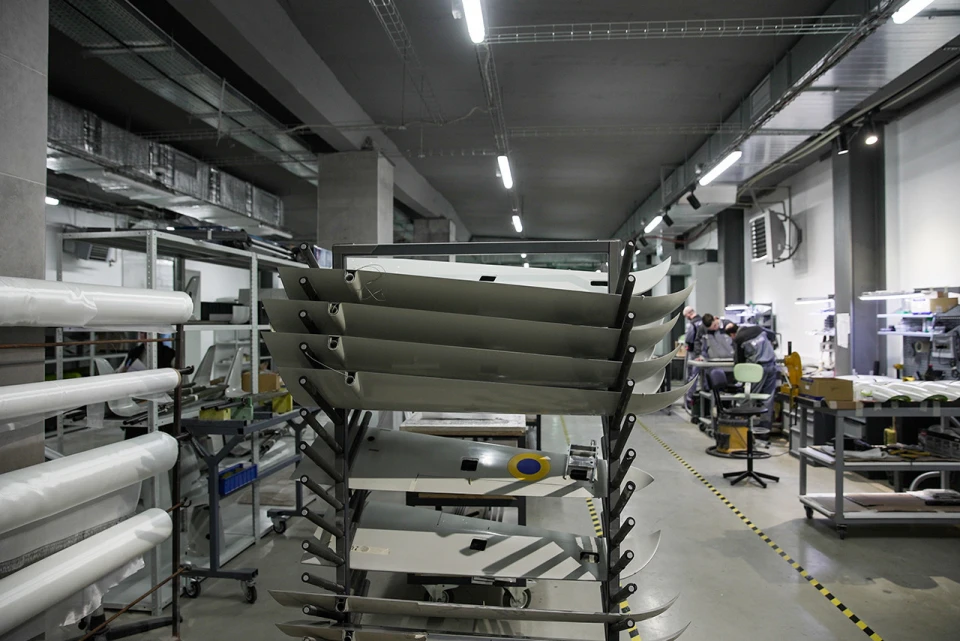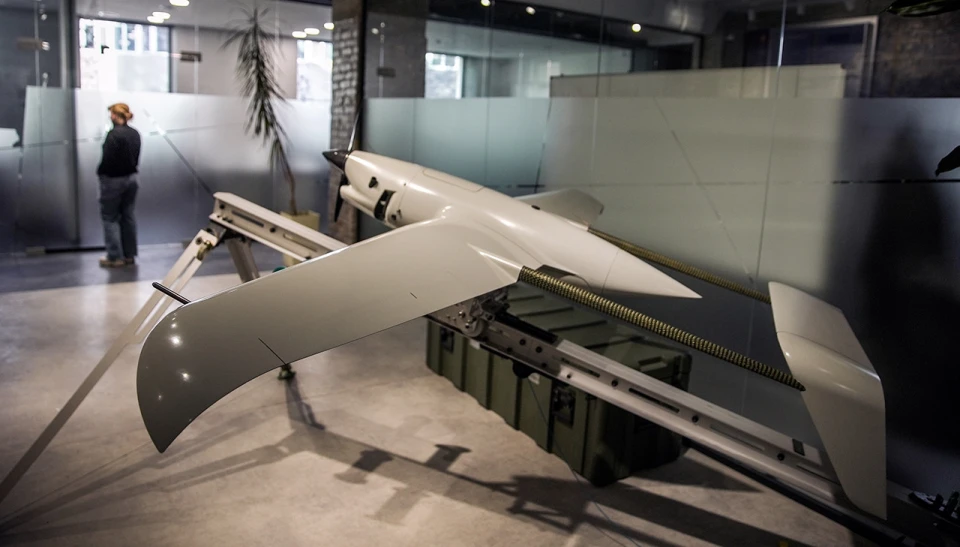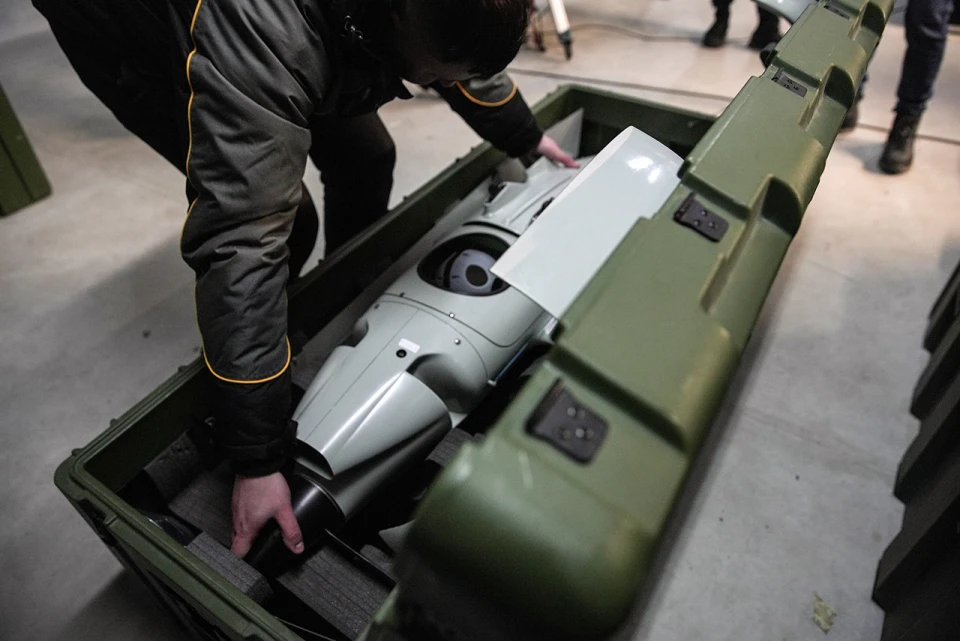
Unafraid of electronic warfare or harsh weather: Ukraine's Raybird-3 drone
The full-scale Russian invasion of Ukraine has stimulated the development and production of drones. However, work in this direction had begun long before. The Raybird-3 drone (also known as ACS-3) was approved for military use as early as 2016 and has been officially in service with the Ukrainian Armed Forces since 2018
Contents
- What is Raybird-3
- Capabilities of ACS-3
- How Raybird-3 Works
- Modernization of ACS-3
- Technical Characteristics of ACS-3M
- Raybird-3 vs. Russian Air Defense Systems
- Ukrainian Components, Foreign Production
What is Raybird-3?
Raybird-3 (ACS-3) is a Ukrainian small tactical unmanned aerial system. It is designed for long-duration missions and search-and-rescue operations. The drone has two names because the civilian version is called Raybird-3 and has somewhat limited capabilities compared to the ACS-3, which is supplied to the Ukrainian Armed Forces.
The drones are manufactured by the private company Skyeton. This aviation production company was founded by a group of engineers and pilots in 2006. Initially, Skyeton developed and supplied light sport aircraft to customers in Europe, North America, and the Middle East. Since 2019, the company has been authorized to sign contracts in its new primary focus—developing and supplying unmanned aerial systems.

A display of wings for reconnaissance UAVs Raybird-3 at the Skyeton production facility, Photo: Getty Images
The development of ACS-3 was carried out as part of a state defense order.
"The new unmanned system was developed over three years and underwent testing between 2016 and 2018," quoted the Militarnyi outlet in 2019, citing the company’s director Mykola Toptun. In July of the same year, deliveries of the systems to the Air Force began.
Just a few months before Russia’s full-scale invasion, Skyeton was preparing its drone for entry into the European market. At that time, the company was already supplying drones to Africa and Asia but noted a "fantastic demand in Europe for systems that can fly long distances and cover large areas."
Capabilities of ACS-3
In September 2019, the drone set a Ukrainian endurance flight record. The Raybird-3 flight took place in the Kyiv region and lasted more than a full day. This was reported by Serhiy Zgurets, CEO of the media and consulting company Defense Express.
"During the flight, the drone, weighing 21 kg, remained airborne for 24 hours and 31 minutes. During this time, the total flight distance exceeded 2,000 km. Landing took place on September 6 at 10 a.m. in a standard parachute mode. After landing, there was still enough fuel left in the UAV’s tank for another 1.5 hours of flight," Zgurets wrote. According to the manufacturer, the flight endurance has now been extended to 28 hours.
Endurance is one of the key features of ACS-3. In a video review of the UAV, Zgurets highlights the "unique capabilities of Raybird-3 for conducting long-duration operations." This includes long-range reconnaissance missions, continuous target tracking, water area monitoring, and other operations requiring exceptional persistence.
In a single flight, the UAV, weighing 23 kg (with a 5 kg payload), can cover a distance of 2,500 km. This places within its range targets as far as the Arctic Circle (such as the Olenya airbase) or cities beyond the Ural Mountains in Siberia (e.g., Omsk, Tyumen, or Khanty-Mansiysk).
The operator can control the drone directly at a distance of up to 240 km. The cruise speed of ACS-3 is 120 km/h, with a maximum speed of 160 km/h.
The military version of the drone is equipped with electronic warfare protection and can conduct flights autonomously along a pre-programmed route.
"In an environment with enemy electronic warfare (EW) interference, our UAV will continue its mission by navigating not with a GPS signal but using an onboard digital map and an inertial navigation system," Defense Express quoted Skyeton’s commercial director Roman Knyazhenko.
If the enemy jams communication channels, the Raybird-3 is equipped with noise-resistant wideband telemetry and control systems. This makes it difficult for adversaries to detect the drone’s operating frequency, while the ACS-3 can seamlessly switch to another frequency to maintain its mission. Even if communication is completely disrupted, the UAV will autonomously follow its pre-programmed route and return to base.
How Raybird-3 Works
Developers claim that in addition to resisting electronic warfare, the Ukrainian drone can withstand harsh weather conditions and extreme temperatures, ensuring mission success.
The UAV is launched using a mechanical catapult at an initial speed of 55 km/h, and landing is performed via parachute. The catapult can be easily assembled and packed into transport boxes, allowing deployment in any terrain, even in strong winds where vertical takeoff and landing (VTOL) systems might fail.

Raybird-3, Photo: Getty Images
"Automated takeoff and landing, along with tool-free assembly in 25 minutes, make Raybird indispensable for time-sensitive operations," Skyeton presents. Additionally, the payload can be changed in less than a minute.
Regarding payload, the drone can carry cameras, thermal imaging devices, radars, or other equipment up to 5 kg. The system protects its equipment by retracting cameras inside the aircraft after use.
The aircraft's airframe is made of composite materials. According to Serhiy Zgurets, it has "unmatched characteristics and no equal among foreign competitors in this class."
Modernization of ACS-3
The modernized version, ACS-3M, was introduced in 2020. The upgraded drone received a new Japanese fuel-injected engine, new software, and the ability to carry a compact radar.
The new engine increased the drone’s ceiling from 3,000 meters to 4,500 meters. Automatic fuel adjustment improved fuel efficiency by 15%.
A crucial upgrade was the completely rewritten software.
"Previously, ACS-3 had a single workstation interacting with one UAV. Now, a ground control station can connect to multiple aircraft, and conversely, multiple users can control a single drone. If multiple users are connected, the software assigns different access levels. One operator can observe the UAV’s actions, while another controls it," the Militaryi outlet explained.
Additional improvements were made in 2021. In March, Skyeton successfully tested a new automatic launch system, allowing Raybird to take off not only from a stationary catapult but also from moving vehicles.
At the end of 2021, a new function was introduced for ACS-3M — allowing direct UAV camera control to be handed over to troops on the battlefield. This enabled soldiers to receive crucial reconnaissance information within minutes and make faster decisions in combat.
"If the ACS-3M UAV is within 15 km of a ground unit, it automatically transmits its video feed to a tablet. The operator can then allow the soldier to control the drone’s camera via an intuitive interface," Defense Express explained.
Militarnyi calls the possibility of installing and using a Ukrainian synthetic aperture radar (SAR) manufactured by Radionics an "ultramodern option" for the drone. It allows the drone to be used for reconnaissance in the "depths" of enemy territories even in conditions of heavy cloud cover, which usually makes conventional reconnaissance drones with optical surveillance powerless. Defense Express wrote that "with the new radar from Radionics, our drones can see through clouds day and night," and also noted the attractive price of Ukrainian radars compared to European counterparts. The cost of one complex, consisting of three aircraft, a portable ground control station, an antenna system, a launcher, as well as a camera, a still camera, and radars, is $1.2 million, Forbes Ukraine wrote. Only five companies in the world can produce UAVs with similar characteristics, but their products are much more expensive than the Ukrainian one.
Technical specifications of ACS-3M
- Length – 1.83 m,
- Wingspan – 2.99 m,
- Height – 0.32 m,
- Maximum flight range – up to 2,500 km,
- Maximum operational range in programmed mode – 1,000 km,
- Flight duration – up to 28 hours,
- Maximum speed – 160 km/h,
- Cruising speed – 120 km/h,
- Minimum speed – 80 km/h,
- Maximum altitude – up to 4,500 m,
- Telemetry and control data transmission range – up to 120 km,
- Takeoff weight – up to 23 kg,
- Payload capacity – up to 5 kg,
- Fuel tank capacity – 9 L,
- Engine power – 3 hp,
- Operating temperature – from -25 to 45°C.
Raybird-3 vs. Russian air defense systems
The Armed Forces of Ukraine are actively using the ACS-3. In February 2023, Minister of Digital Transformation of Ukraine Mykhailo Fedorov announced the transfer of two systems to the needs of the Ukrainian military. According to him, the Raybird-3 performed well during the counteroffensive in the Kharkiv region.

"The occupiers tried to shoot down the drone with a Buk air defense system near Balakliya but failed. The Raybird-3 not only evaded the attack but also tracked the enemy system as it went for reloading. The drone then transmitted the coordinates to the artillery, which successfully struck the occupiers' ammunition depot," Fedorov said.
Developers claim that if the Buk system struggles against the Ukrainian UAV, other Russian air defense systems are even less capable.
"Russian MANPADS simply won’t hit us. We participated in various training exercises in Ukraine, where everything available in the Armed Forces was used to target us. The ACS-3M can only be detected and locked onto by the Buk system, but this happens at a distance where we already see it. Systems like the S-300 won’t be able to find us, even in manual mode," emphasized Roman Knyazhenko.
Ukrainian components, production abroad
Skyeton has reported that its enterprise uses state-of-the-art equipment and advanced polymers for aircraft components, while all software is developed in-house.
"Almost everything is Ukrainian. We manufacture engines, processors, and even antennas ourselves. We have a closed and full production cycle. We only purchase raw materials," Skyeton stated.
In July 2024, the company launched drone production in Slovakia. As of summer, $3.5 million had already been invested in the project. The production of Raybird drones in Slovakia began in spring 2024, with the company renting a 1,000-square-meter facility.
"It was created as a backup in case something happens to us in Ukraine," explained Skyeton founder Oleksandr Stepura.
From February 2022 to May 2024, Ukraine’s defense forces ordered more than 75 reconnaissance systems from Skyeton. The company’s Ukrainian facilities can produce about 100 systems per year but are only operating at half capacity due to state orders. The Slovak plant can manufacture 25 reconnaissance systems annually, with plans to quadruple production after closing an investment round.
- News











































